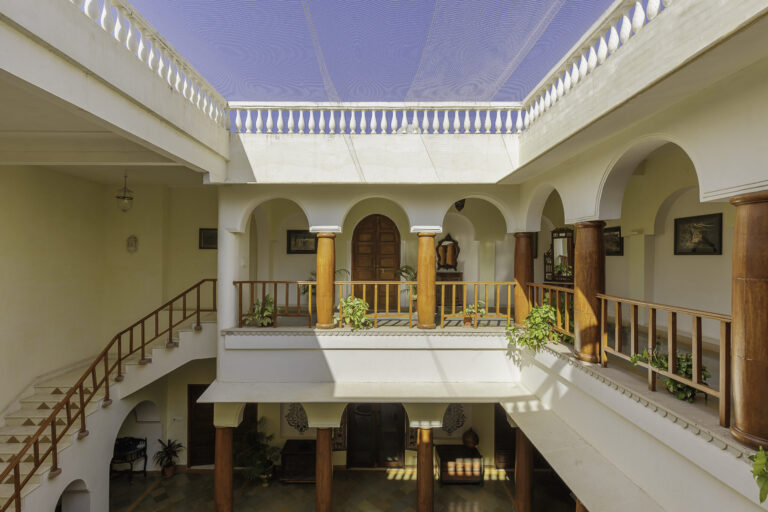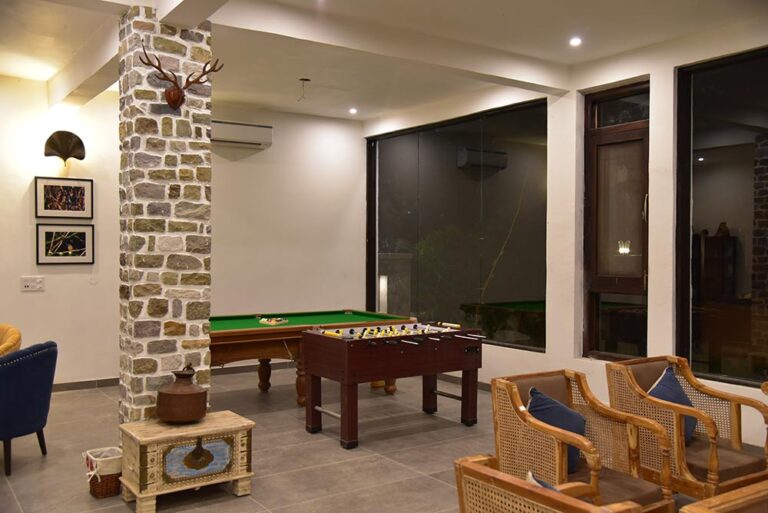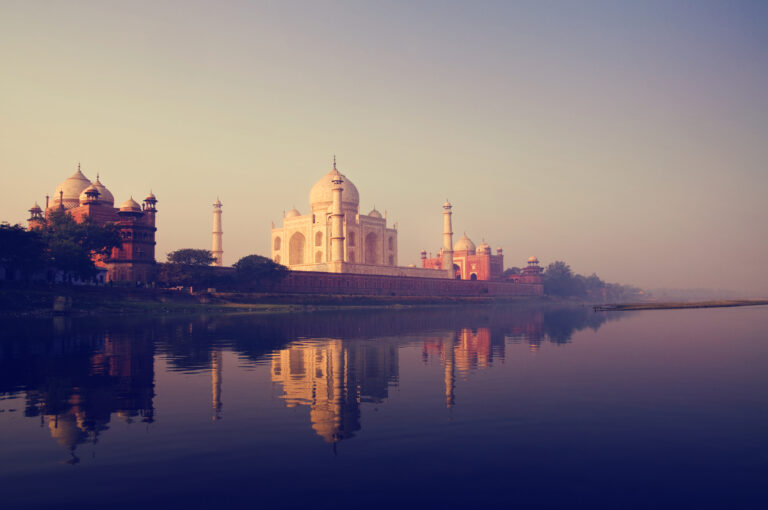Travelling in search of food has been a primary driver of human mobility since the dawn of civilization. From the first step taken by a prehistoric man in search of food, we can say that the entire tour and travel industry has grown. For many men, food is the primary reason for embarking on a journey. The term “Food Tourism” or “Culinary Tourism” was coined after a modern man began travelling to different regions to sample their local delicacies. When we decided to visit Shekhawati, this was exactly what we were thinking about. The most obnoxious gathering of street food vendors we saw while visiting the area was in front of the Rani Sati temple campus in Jhunjhunu.
Kulfi, an Indian ice cream, was available for purchase from a few vendors. It is made of milk that has been thickened, sugar has been added, and dried fruits and saffron have been added to the top. Kulfi is made by filling the iron/steel containers with the mix and freezing it in an earthen pot with an ice-salt mix. It’s heavenly when made correctly. The thickened milk can be flavoured with a variety of dry fruits and condiments to produce a variety of Kulfi flavours. However, it is difficult to say that Kulfi originated in the Shekhawati district of Rajasthan. It is most likely a dish that was served in the Mughal courts. It had spread across the country from there.
Another well-known Indian ice cream dish was the Kulfi. Chuski is a dessert made with ice that goes by the name the same name. It is a favourite of children and women at any age, according to reports. Colourful sugar syrups are added to the ice cubes before they are finely crushed. A variety of chuski can be made by varying the colour and flavour of the sugar syrup. However, it is difficult to link this dessert to the Shekhawati region. Similar to Kulfi, it has become widely popular and can be found almost anywhere in the country.
Paani-puri, a fried and bulged bread filled with spiced water, were popular in Shekhawati as well as across India. Because of the tangy flavour and delectable recipe, it has remained popular with the general public. A lot of puritans used to lash out at this food, claiming that it was bad for you because of the fear of drinking tainted water. It has, despite all of this, managed to survive. The filling for flatbreads is packaged and sold by many businesses so that people can make it at home. Crispy and swollen, the flatbread becomes when fried in oil. Potato, tamarind paste, pulses, and onions make up the filling mixture. Salt, pepper, lemon, cumin, and coriander are all added to the water before serving. However, despite being a popular street food in Shekhawati, it cannot be traced back to that region.
Chaat, a sweet-and-sour vegetarian snack, must be included in any discussion of street food. With either a potato or pulses base, it is possible to make this dish. This dish is commonly made with curd, tamarind, and coriander leaves. Other fried snacks, such as Kachori and Samosa, are also available at the Chaat stalls. Two kinds of chaat can be made by mixing kachori and samosa with the original chaat mixture. It’s nearly impossible to trace the ancestry of these exotic dishes, thanks to centuries of cultural exchange. As a result of this widespread adoption of chaat, a wide variety of variations exist, each with its own unique blend of spices and condiments as well as preparation methods.
Fried potatoes, cauliflower, green grammes, and other vegetables were served alongside the aforementioned dishes. It’s difficult to define “local cuisine” in this era of globalization because so many of the same snacks are available in every city in the country.
Some believe that the term “Local Cuisine” encompasses all dishes prepared in the region by residents, while others argue that it refers only to foods made with ingredients cultivated in the area and prepared according to traditional methods handed down through the generations. This region is said to be known for its besan ki roti, a type of flatbread made with gramme flour. Due to their favourable climate, the Shekhawati districts of Churu and Jhunjhunu are major gramme producers. Because of the abundance of gramme flour and the ease of making these chapattis, they’ve become popular. These chapattis are delicious when made with the right amount of salt, spices, and flour.
Bajre ki roti, a flatbread made with millet flour, is another delectable option. Millet thrives in the Shekhawati region because of its dry climate and low rainfall. Its flour has a coarse texture. It is primarily rolled by hand and cooked on a charcoal burner because of its granularity. It also tastes great with a generous helping of butter. It’s typically served alongside some sort of pulse dish.
Shekhawati has a wide variety of pulses to choose from. Many dishes have been developed by simply combining their respective proportions because of their abundance. You can eat a simple dish made with only one type of grain, or you can make a dish with multiple types of grains. Shekhawati pulses have a tangy and delicious flavour thanks to a variety of spices. The amount of butter they used was significantly less than what I’m used to seeing in Punjabi cooking. Daal Baati Choorma, a mixture of pulses, wheat flour balls, and coarsely ground gram/wheat flour, is the signature dish of the “Shekhawati cuisine.”
Wheat flour and semolina are the primary ingredients in Baati. To achieve an even texture, the dough balls are first cooked in boiling water and then finished baking over an open flame. Also, deep-frying the dough balls in hot oil is an option for making baatis. The baatis are frequently broken and dipped in butter as they are consumed.
For those who prefer their food sweeter, they can opt for Choorma (Sweetened ground wheat flour). In reality, choorma is a byproduct of the baati-making process. A portion of the dough is set aside for making choorma before the salt is added to the dough balls. The dough is seasoned with sugar or jaggery. Cooked like baatis after the sugar has been added. To make a coarse powder, the dough balls are ground by hand after they’ve been cooked. When prepared to perfection, it is also a delectable dish.
We could also enjoy Rajasthani kadi, Ghatte ki subji, and Paneer ki Sabji during our stay in Shekhawati, in addition to the above special dishes. All across the country, you can find local cuisine. It was a unique experience, however, to partake in “food tourism,” where tourists travel to other countries to sample their own local cuisine.
Let me conclude by acknowledging that there are many other dishes that can be traced back to Shekhawati. Nawalgarh, on the other hand, is the best place to sample local cuisine from the Shekhawati region. Many experienced tour guides have opened their own restaurants in the area to cater to tourists who want to sample the local cuisine. Jhunjhunu is a great place to go for street food.







